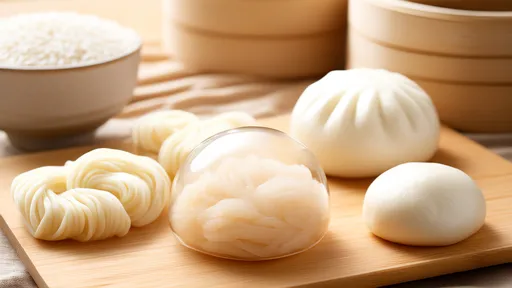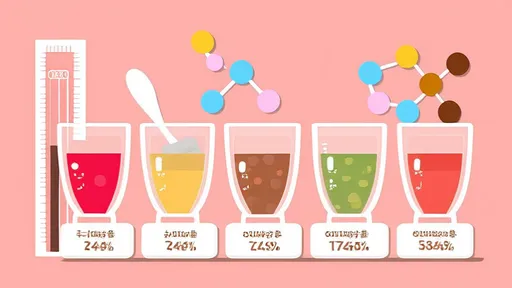The aging process brings with it a host of challenges, one of the most overlooked being the difficulty many seniors face when swallowing food. Known medically as dysphagia, this condition affects a significant portion of the elderly population, making mealtime a potential hazard rather than the pleasurable experience it should be. While pureed foods and thickened liquids have long been the standard solution, modern culinary techniques and creative adaptations are revolutionizing how we approach senior nutrition. The key lies in modifying everyday staples—those comforting, familiar foods that evoke memories and nourish both body and soul—without sacrificing texture, flavor, or dignity.
Texture modification stands as the cornerstone of dysphagia-friendly cooking, but achieving the perfect consistency requires more than simply blending everything into a homogeneous mush. Take mashed potatoes, for instance—when prepared correctly, they can retain a creamy, velvety mouthfeel while eliminating lumps that might cause choking. The secret lies in using starchy Russet potatoes, steaming rather than boiling them to preserve moisture, and incorporating warm milk or broth gradually until reaching the desired smoothness. A pinch of nutmeg or roasted garlic elevates the flavor profile, proving that safety needn’t come at the expense of taste.
Rice, a global dietary staple, poses particular challenges for those with swallowing impairments. Traditional methods of simply overcooking it result in a sticky, glue-like texture that’s unappetizing and potentially dangerous. Instead, Japanese-style rice porridge (okayu) offers an elegant solution—slow-simmered with a 5:1 water-to-rice ratio until the grains burst open, creating a soothing, easily digestible dish. For Western palates, Arborio rice cooked risotto-style with extra stock and puréed vegetables achieves a similar effect, yielding a nutrient-dense meal that’s both luxurious and safe to swallow.
Bread, that most fundamental of human foods, undergoes a remarkable transformation when approached with dysphagia in mind. The typical sandwich becomes hazardous, but French toast soaked in an egg-milk mixture until custard-like, then baked rather than fried, provides a protein-rich alternative that melts in the mouth. For those who miss their morning toast, savory bread puddings incorporating puréed vegetables and herbs deliver familiar flavors in a spoonable format. The enzymatic action of eggs on the bread’s gluten structure creates a tender consistency that’s easily managed by weakened swallow reflexes.
Pasta, another beloved carbohydrate, adapts beautifully to texture modification when prepared with intention. Overcooked noodles turn mushy and unappealing, but hand-torn pasta cooked in abundant salted water until very soft, then tossed with a silky sauce (like butternut squash purée or slow-cooked ragu passed through a food mill), maintains structural integrity while being easy to chew and swallow. For Italian-style comfort, gnocchi made with ricotta instead of potato offers a lighter, more delicate option that’s less likely to form dangerous boluses in the mouth.
The psychological aspect of meal modification cannot be overstated. Presenting foods in recognizable forms—shaping puréed chicken into a drumstick mold or piping mashed sweet potatoes to resemble their roasted counterparts—helps maintain the diner’s connection to the ritual of eating. Color contrast on the plate becomes increasingly important as visual acuity declines; a bright purée of peas beside golden mashed squash not only looks appealing but helps those with cognitive challenges distinguish between components of their meal. These thoughtful touches transform clinical necessity into culinary art.
Moisture management proves critical in creating senior-friendly dishes. Dry foods like crackers or roasted meats become choking hazards, while overly wet foods may cause aspiration. The solution often lies in sauces and binders—a velvety béchamel can soften diced chicken without turning it to slurry, while avocado purée adds healthy fats and creaminess to sandwiches without requiring excessive chewing. Gelatin, when used judiciously, can provide structural support to softer foods, allowing them to hold shape on the plate but dissolve easily in the mouth.
As research continues to reveal the connection between nutrition and longevity, the importance of making these dietary adaptations appealing becomes clear. The goal isn’t merely to prevent choking, but to create meals that spark joy, stimulate appetite, and honor a lifetime of culinary experiences. With creativity and compassion, caregivers can transform the challenge of dysphagia into an opportunity for culinary innovation that respects both the body’s limitations and the soul’s enduring love of good food.

By /Jul 28, 2025

By /Jul 28, 2025

By /Jul 28, 2025

By /Jul 28, 2025

By /Jul 28, 2025

By /Jul 28, 2025

By /Jul 28, 2025

By /Jul 28, 2025

By /Jul 28, 2025

By /Jul 28, 2025

By /Jul 28, 2025

By /Jul 28, 2025

By /Jul 28, 2025

By /Jul 28, 2025

By /Jul 28, 2025

By /Jul 28, 2025

By /Jul 28, 2025

By /Jul 28, 2025

By /Jul 28, 2025

By /Jul 28, 2025